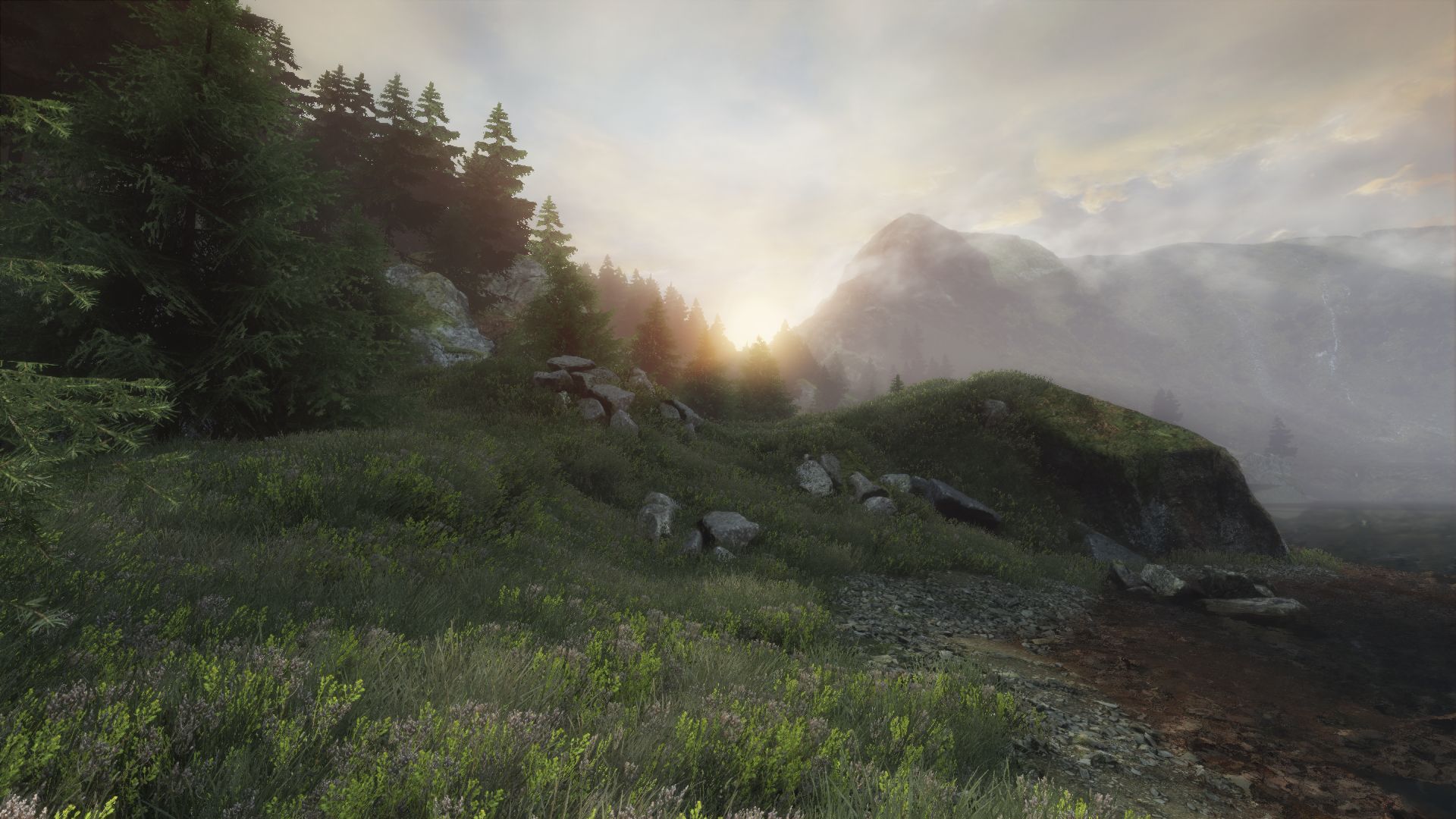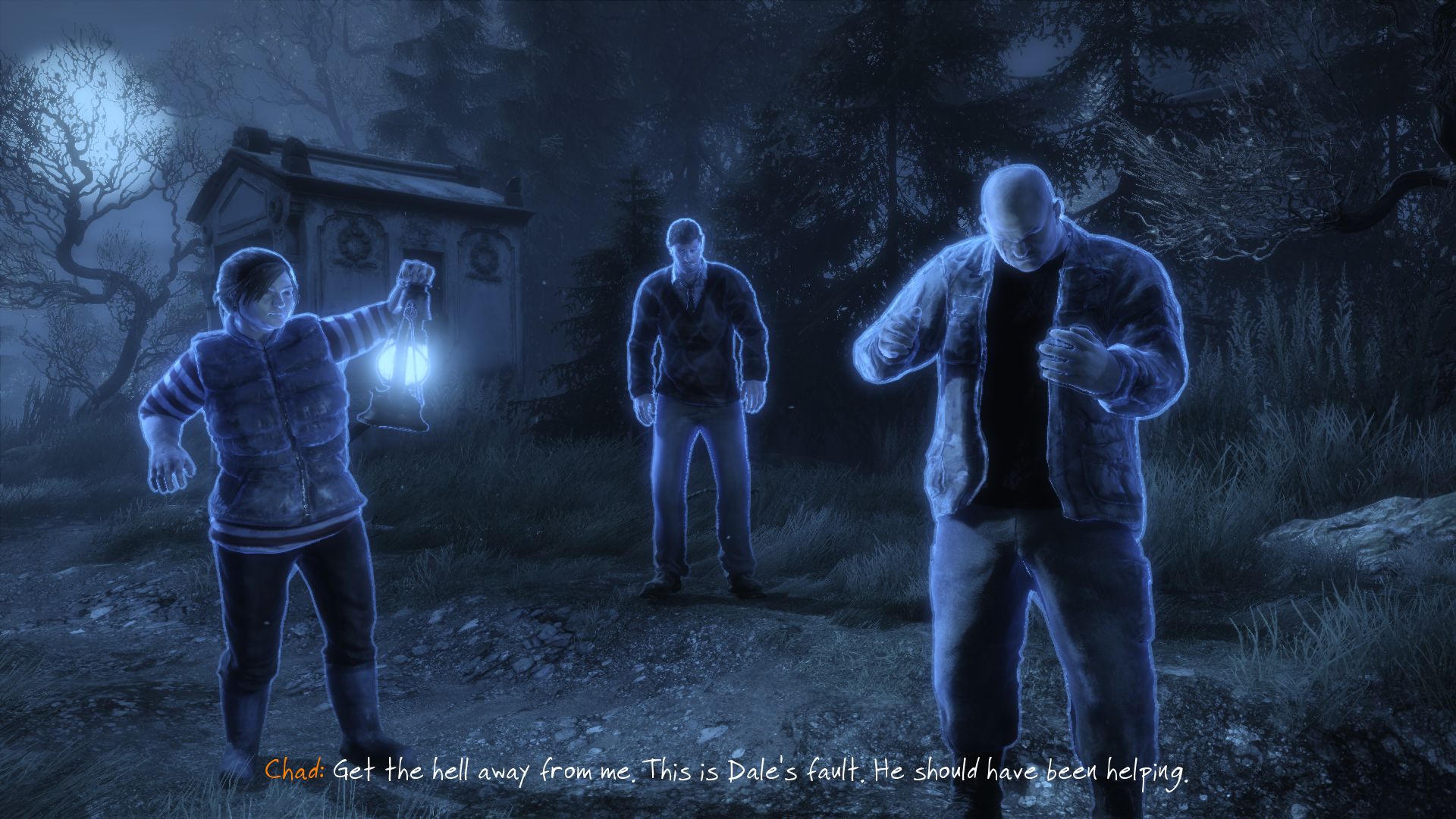The Vanishing of Ethan Carter Review
Ambiguity is everything in this beautiful walking simulator
Walking simulators are no longer a novelty sub-genre despite their exclusion of standard gameplay traits. Recent titles have exploited unique worlds to great success. Death Esther took players across stunning coastal bluffs as they listened to evocative narration. The Stanley Parable deployed humor and visual trickery to keep players entertained as they navigated offices and baby-burning simulators. The Vanishing of Ethan Carter creates a fantastic world, but it struggles to use that world as carefully and effectively as its brethren.

The journey includes numerous beautiful views
You play as Paul Prospero, a detective who is searching for a boy named Ethan Carter in Red Creek Valley. The valley itself consists of a handful of buildings caressing a broad river surrounded by mountains and forests. The valley is composed of some truly astounding environments. It is easy to get lost in the moment, gazing across a lush field as the wind jostles the blades of grass. Unreal Engine 3 is pushed to its limits with gorgeous foliage and natural textures. Rocks and boulders are torn straight from the real world, giving Red Creek Valley an authentic feel not unlike the aforementioned Dear Esther. The wonderful visuals come at a cost though, as there is occasional stuttering because the world is being streamed in the background. These hiccups quickly remind you that you are playing a video game and not just exploring a wonderful location.
This is not a pure walking simulator however, as there are moments where it transforms into an anorexic point-and-click adventure game. In simplistic terms, you must find items and place them back to where they once were located. Areas of interest can be broken into two categories: abstractions and murder scenes. Murder scenes are generally logical. You investigate a small crime scene, locate a number of objects scattered about, and put the pieces back together. Abstractions are completely different from murder scenes and from each other, and it would only spoil the game to describe them. Almost all abstractions are confusing situations that require leaps in logic, although in hindsight none are difficult. These two types of areas are scattered throughout the world waiting for you to stumble upon them.

Murder scenes feature some simple gameplay elements and neat flashbacks
Red Creek Valley is not a huge open world, but the size of the explorable area poses problems when it comes to progression. At the beginning of the game you may acquire a task almost immediately, but later you can walk for minutes before additional scenes are located. This means you are never quite sure how thoroughly you need to scour the landscape. Do you search behind these trees or is that just going to lead to another invisible wall? Is that an important object nestled in the grass or just an oddly colored rock? You are rarely told what is required or how each object is connected. The game is proud of its ambiguity and happy to let you flounder with only the background music to keep you company. At several points during the game you may have absolutely no clue about what to do or where to go.
It is entirely possible to arrive at the final area in the game and have less than half of the required tasks completed. The game will show you which tasks are unfinished and where approximately they are located. After this, the walking simulator component comes to the fore - you spend 15 minutes back-tracking to find tasks you never knew existed. The Vanishing of Ethan Carter is often comparable to a treasure hunt and this means it might take you 4 or 5 hours to complete with fresh eyes. On replay, you can complete all tasks (not just the required ones) in around an hour. So, more than half of your time is spent walking around in the proverbial dark. And as much as this is a core tenet of the game, and perhaps the sub-genre, it is a lousy way to keep the player invested.
These perceived weaknesses are strengths when taken under a different context. The variety between the abstractions is refreshing and confusing in a good way. Your mind races with new theories as you try to link it all together, often fruitlessly. You will be suitably uncomfortable when nothing is happening, and leap out of your seat immediately after you think you have it all worked out. On completion, the story comes together and tasks seem fairer than when you were actually trying to get through them. The finale is not on same brain-melting levels as BioShock Infinite, but the hidden narrative is worth all that silly back-tracking. If it were judged solely on the underlying story, the game would be a resounding success.
Converting The Vanishing of Ethan Carter into a linear experience might take away the excellent qualities of the world, but there are plenty of corners in Red Creek Valley that harbor nothing of importance. They seem to exist solely to increase the time it takes for players to find the real content. Despite this, the game is more than happy to use invisible walls in odd places to make navigation more of a chore. Perhaps the key design guideline for walking simulators is to ensure that nothing is superfluous and that the player is never retracing their steps unless they had the desire. Red Creek Valley may have fared better with less ambiguity, but the narrative threads would have suffered in turn. The desire to craft a tale through ambiguity has succeeded as much as it has failed.

The road home is never straightforward
Walking simulators are built to counter modern game design that focuses on constant rewards, collectibles, combos and achievements. They shift focus back to the crafted world and let the player absorb themselves in a fictional universe. The Vanishing of Ethan Carter succeeds in creating a stunning and captivating world. Unfortunately how it uses that world leaves something to be desired. It is worth playing, largely due to the thought-provoking story and peculiarity, but be prepared to get lost several times along the journey. When you finish the game, and all of the story threads coalesce superbly, it is hard to forget that so much of the journey was a bumbling trek.
 Comments
Comments













